In Morocco in July, it is possible to escape the heat by heading to the coast, and so we went to Essaouira for one of our more laid-back days to explore an exotic walled town that, relative to our other stops, had fewer must-see sights. This gave Eitan something of a break from his relentless FOMO.
On our way there, we stopped at a “feminine cooperative” where they process argan nuts into oils, lotions and such. This provided employment for women, who are much more liberated than in countries like Saudi Arabia, but there is still progress to be made. In Morocco, argan oil is used to dip bread in at breakfast or to drizzle on couscous or pasta. It is also used for cosmetic purposes.

To extract the kernels, workers first dry argan fruit in the open air and then remove the fleshy pulp. The next stage involves cracking the argan nut to obtain the argan kernels. Attempts to mechanize this process have been unsuccessful, so workers still do it by hand, making it a time-consuming, labour-intensive process.
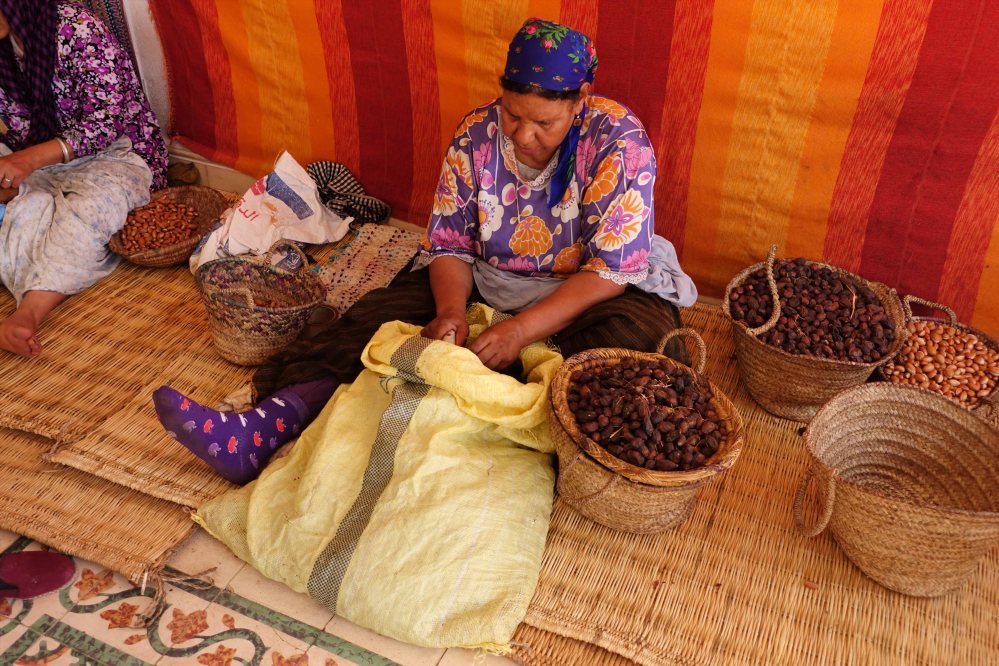
Workers gently roast kernels they will use to make culinary argan oil. After the argan kernels cool, workers grind and press them. The brown-coloured mash expels pure, unfiltered argan oil. You can see Sarah learning this process for when Eitan get’s tired of her and exchanges Sarah for 3 camels and 2 goats in a Moroccan market.

As we approached Essaouira, the temperature dropped dramatically into the 70s. We arrived at our hotel, which was absolutely spectacular in its exquisite detail at every turn. Elly and Dan had the most exceptional suite in their long and distinguished career of wrangling hotel upgrades.
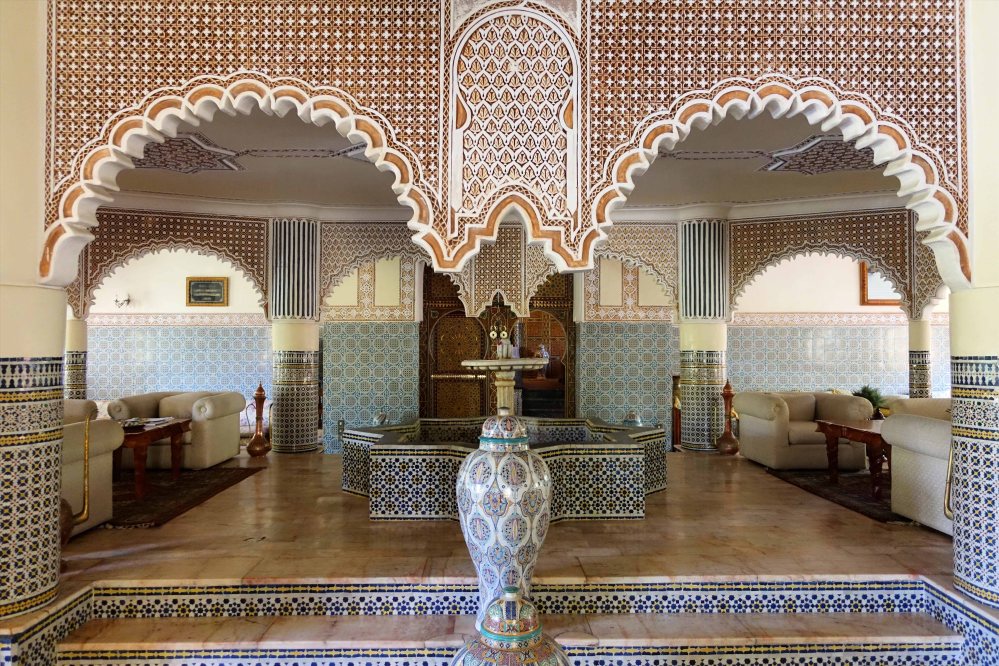

We settled in, then were driven down the coast to a fish restaurant for lunch, where indeed the fish was displayed to us, heads and all. Dan tasted Casablanca beer. Alcohol was more available here than other places in Morrocco as it is seen as a vacation destination.


We enjoyed the beach view from the restaurant where we noticed almost everyone was standing on the sand!

We continued to the port, where Eitan replaced his relentless FOMO with relentless artful photography.
Essaouria has always dictated the importance of the area. By 1,000 B.C., after two thousand years of use of the area by indigenous Berber fishermen, Phoenician traders set up trading villages, and were lured by the presence of murex shells, which contained glands of pigmented mucus.

The pigment made of murex shells harvested in the Mediterranean and beyond is usually called Tyrian purple – reddish purple, rare and expensive throughout the ancient world, and sought after by the great rulers of the Old World. When you see a deep reddish-purple, and it reminds you of royalty, remember that it’s just murex mucous.

This is not the murex purple of Essaouira. The murex shells of this area are not reddish-purple at all. These beautiful Hexaplex trunculus murex mollusks produce a range between indigo, royal blue and bluish-purple, and the hue is known today as Phoenician purple after the traders built production facilities here. The blues we see today honor the history of the city’s 3000 years relationship with the Murex.


From the port, we entered the Medina, where we shopped for clever chess sets, pottery and a brass shield that Sarah and Eitan just knew they needed as an heirloom they would hand down to their grandchildren.


Mohammed ben Abdallah encouraged Moroccan Jews to settle in the town and handle the trade with Europe. Jews once comprised 40% of the population, and the Jewish quarter (or mellah) contains many old synagogues. The town also has a large Jewish cemetery. The city flourished until the caravan trade died, outmoded by direct European trade with sub-Saharan Africa


In the market area, the fish heads from lunch were matched by sheep heads. We passed on this bit of succulence.

 ‘
‘
Emerging from the medina, Eitan returned to his determination to take the perfect travel photo as we headed back to the hotel.

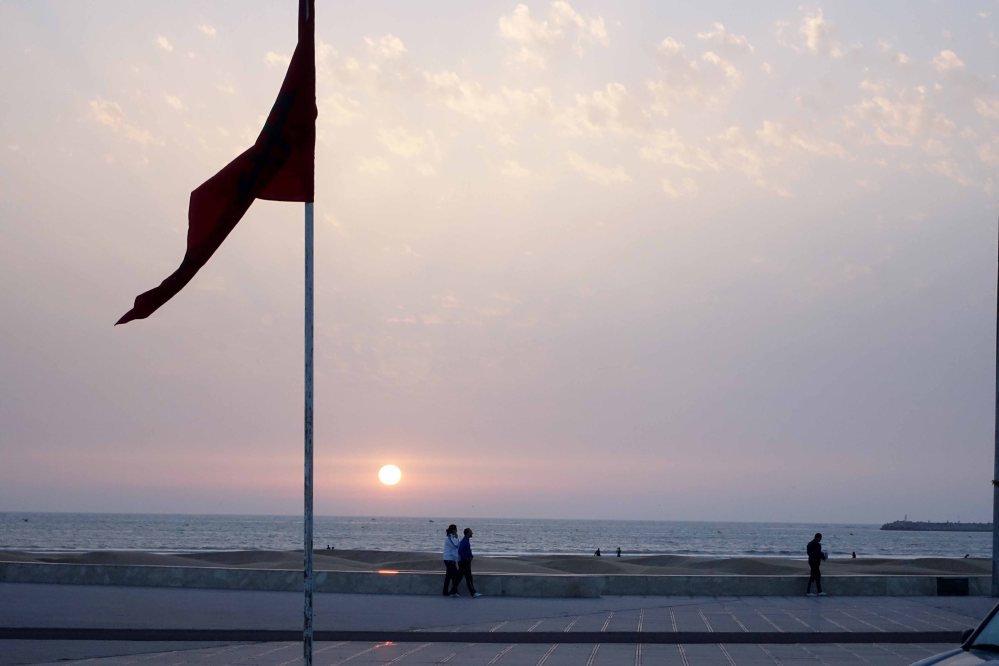
That evening, Elly and Dan luxuriated in their room while Sarah and Eitan enjoyed the wild nightlife. An interesting sight you see here in Essaouira are random people on the side of the road jingling their keychains. They use this tactic to let new visitors know they have a house or room for rent. Who needs Airbnb when you can just stand all day in the sun??

Travel batteries recharged, we were ready the next day to head to high-intensity Marrakesh. But first, Eitan and Sarah went for a nice walk back to the town to visit the famous fortress.

We walked along the beach admiring the woman’s fashionable almost too perverted swimming suits.

We arrived at the beautiful fortress surrounding the city. In 1506, the king of Portugal, D. Manuel I, ordered a fortress to be built there, named Castelo Real de Mogador.
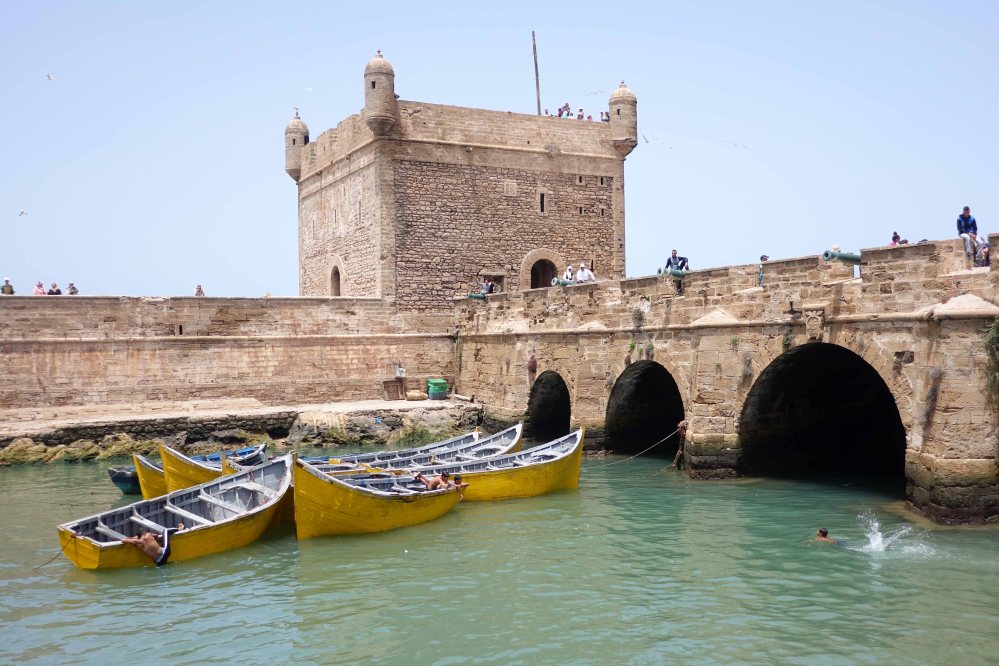
During the 16th century, powers including Spain, England, the Netherlands, and France tried in vain to conquer the locality. Essaouira remained a haven for the export of sugar, molasses and the anchoring of pirates.



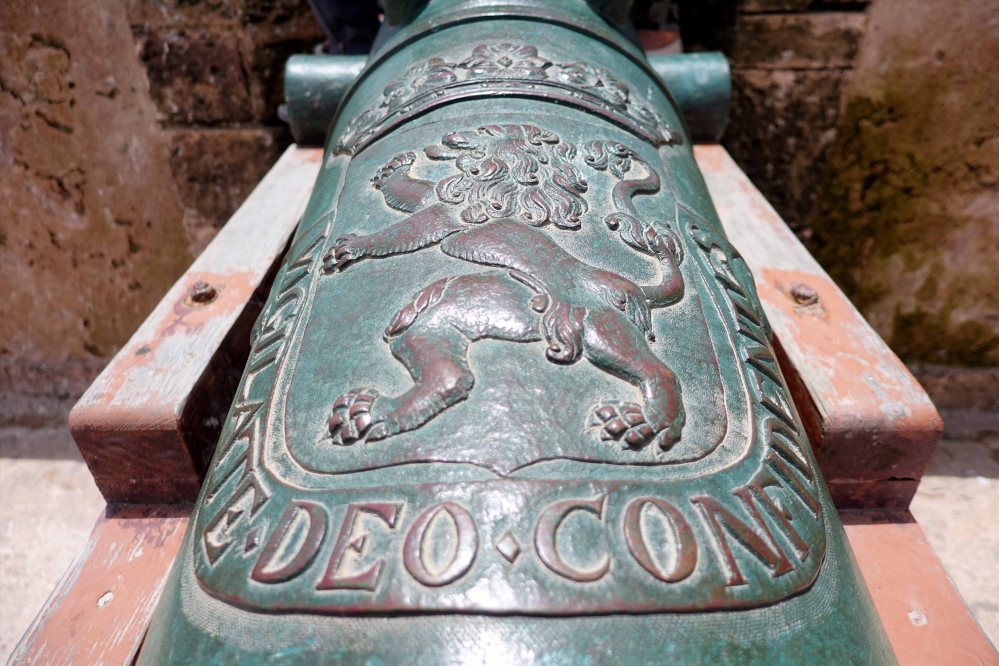
The present city of Essaouira was built during the 18th century. Mohammed III, wishing to reorient his kingdom toward the Atlantic for increased exchanges with European powers, chose Mogador as his key location. One of his objectives was to establish a harbor at the closest possible point from Marrakesh.
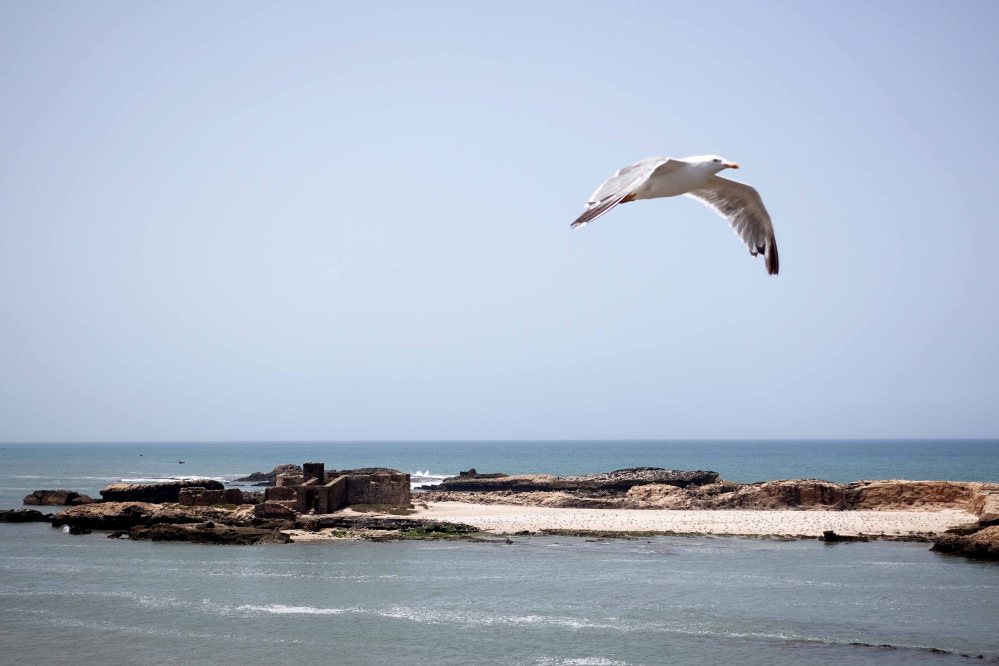
From the time of its rebuilding by Muhammad III until the end of the nineteenth century, Essaouira served as Morocco’s principal port, offering the goods of the caravan trade to the world. The route brought goods from sub-Saharan Africa to Timbuktu, then through the desert and over the Atlas mountains to Marrakech.


We spent some time exploring the walls and enjoying the beautiful weather!


After eating a delicious falafel (ignore Eitan’s face), we came back to the hotel to pick up Elly and Dan to start the drive to Marrakesh.

Bonus Pic Of The Day: There is a tradition, in some areas of Morocco, of allowing goats to climb argan trees to feed freely on the fruits. The kernels are then later retrieved from the goat droppings, considerably reducing the labor involved in extraction at the expense of some potential gustatory aversion. Even though according to the Wolfs, they witness one of this majestic Nature’s sights while driving in the desert, Eitan was asleep to photograph it. (Photo from Google)
